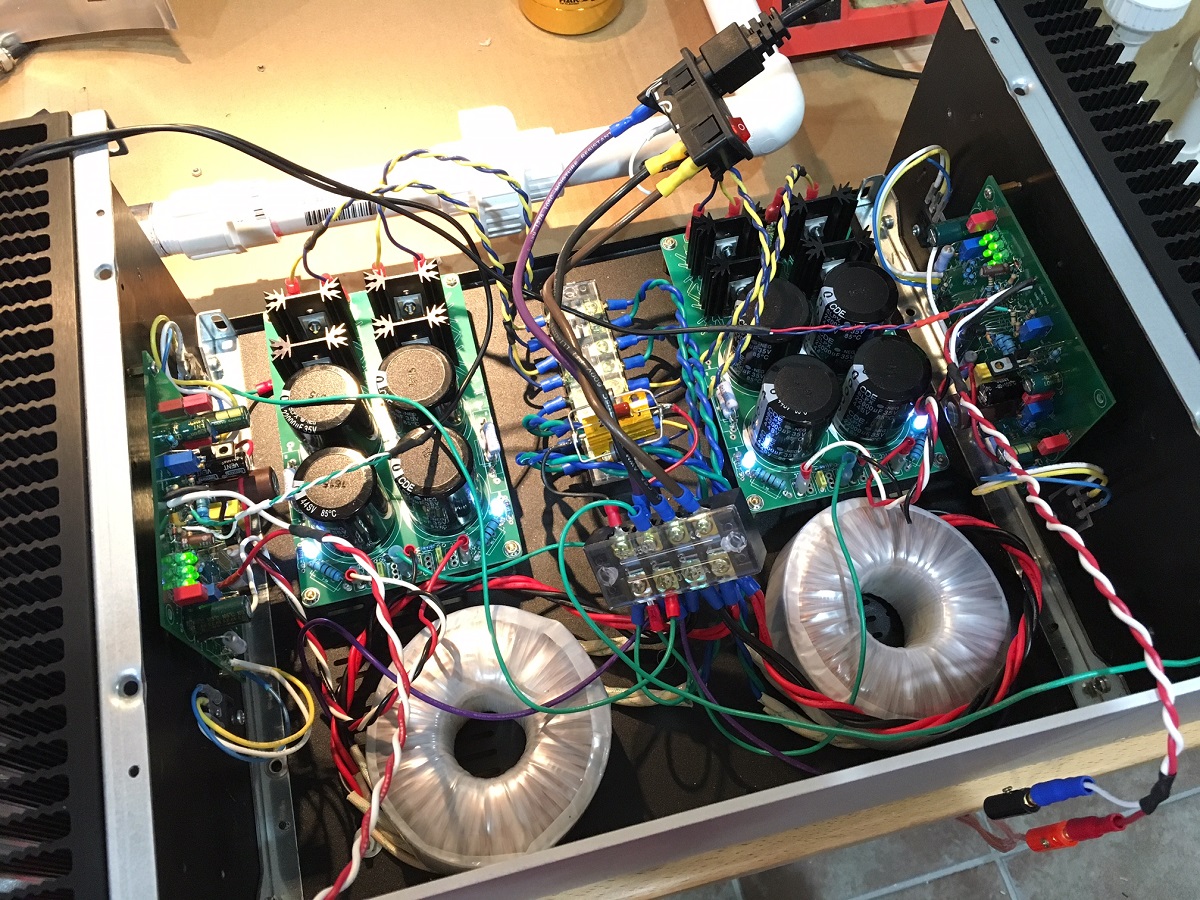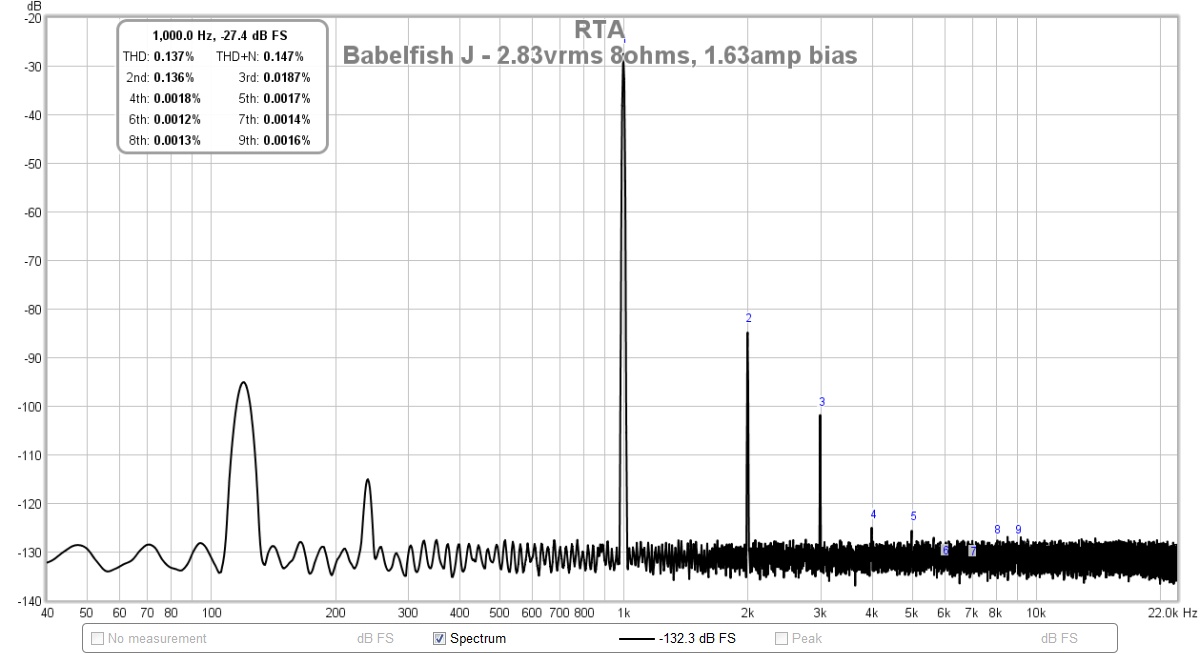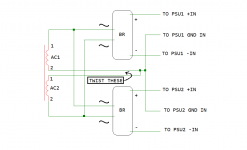Here you go PeeCeeBee V4 GB!
Thanks manniraj.
for a single dual polarity supply you have two choices.Do i need to use two transformers or need to go diodes with higher amps like 1560.
Is this a expected behaviour or anything went wrong from my side
a.) centre tapped secondary transformer:
Use a single bridge rectifier.
Take the centre tap past the rectifier to become the PSU Zero Volts.
Take the +ve from the rectifier and the -ve from the rectifier. These three wires are your dual polarity supply.
b. ) dual secondary transformer:
Use two bridge rectifiers.
Connect one secondary winding to one bridge rectifier, connect the other secondary winding to the other bridge rectifier.
Take the four connections from the bridge rectifier to your load. One pair of +ve and -ve outputs gives one half of the supply.
The other pair of +ve and -ve outputs give the other half of the supply.
Connect the +ve of one to the -ve of the other. This becomes the PSU Zero Volts.
You can convert a dual secondary to behave like a centre tapped transformer by connecting two of the secondary winding together. But you must connect these two windings "in phase".
Then follow option a.)
Update on the CRC PSU board as used in the Babelfish J amp designed by Zen Mod. I am using dual toroidal transformers with dual CRC boards and that seemed to solve the ground loop issue I was getting. The FFT with this PSU now looks very clean with no 60Hz peak, just a peak at 120Hz and another smaller one at 240Hz. These are about -65dB down from the main signal so are inaudible. The output noise on the amp is measuring 0.9mV rms. But in general, one of the quietest linear transformer based PSU's I have measured - just notice the very flat and noise-free floor from 300Hz and higher.


Last edited:
The FFT shows spikes @ 120Hz and 240Hz. Both are even harmonics of the mains supply.Update on the CRC PSU board as used in the Babelfish J amp designed by Zen Mod. I am using dual toroidal transformers with dual CRC boards and that seemed to solve the ground loop issue I was getting. The FFT with this PSU now looks very clean with no 60Hz peak, just a peak at 120Hz and another smaller one at 240Hz. These are about -65dB down from the main signal so are inaudible. The output noise on the amp is measuring 0.9mV rms. But in general, one of the quietest linear transformer based PSU's I have measured - just notice the very flat and noise-free floor from 300Hz and higher.


This is unusual, since we tend to see the third harmonic dominating.
I don't know why your assembly is different, but I suspect there is a good reason.
I see lots of twisted or close coupled wire pairs.
Could some of the few other single wires be paired up with their partners?
Would this affect the mains interference?
how did you measure this?The output noise on the amp is measuring 0.9mV rms
Using a DMM set to 199.9mVac, I expect a good amplifier to give <0.3mVac and an excellent amplifier to give <0.1mVac
Last edited:
@AndrewT:
It was measuring 0.1mVAC before I connected the -ve input of the LTP to ground (via a 10R). If I disconnected that connection and drove it with balanced inputs, it would probably be back at 0.1mV.
I will get larger trafo's soon and tidy up wiring wherever possible. The even harmonics is interesting. I noticed that I had the phase driving the bridge rectifiers on one PSU opposite of the other. I since swapped that and added a common mode toroid choke on the mains input before the large toroidal power trafo. Have not had chance to take new data yet.
A day prior, I took data and it did not have the 240Hz peak - just the 120Hz and it was lower. So cable proximity and interference pickup may be at play here.
Regarding pairing up cables, what, do you do with chassis/earth grounds (green wires)? On a dual rail +ve/-ve and gnd triplet - does it make sense to twist all 3 together like I did?
@Prasi: the BFJ sounds very nice - like a SE Class A amp but with a lot of power. The active CCS via Pass' Aleph circuit appears to have some positive influence on speaker cone control. The bass on my Tang Band W5-2143 sounds especially articulate and deep.
It was measuring 0.1mVAC before I connected the -ve input of the LTP to ground (via a 10R). If I disconnected that connection and drove it with balanced inputs, it would probably be back at 0.1mV.
I will get larger trafo's soon and tidy up wiring wherever possible. The even harmonics is interesting. I noticed that I had the phase driving the bridge rectifiers on one PSU opposite of the other. I since swapped that and added a common mode toroid choke on the mains input before the large toroidal power trafo. Have not had chance to take new data yet.
A day prior, I took data and it did not have the 240Hz peak - just the 120Hz and it was lower. So cable proximity and interference pickup may be at play here.
Regarding pairing up cables, what, do you do with chassis/earth grounds (green wires)? On a dual rail +ve/-ve and gnd triplet - does it make sense to twist all 3 together like I did?
@Prasi: the BFJ sounds very nice - like a SE Class A amp but with a lot of power. The active CCS via Pass' Aleph circuit appears to have some positive influence on speaker cone control. The bass on my Tang Band W5-2143 sounds especially articulate and deep.
Last edited:
This change warrants further investigation.@AndrewT:
It was measuring 0.1mVAC before I connected the -ve input of the LTP to ground (via a 10R). If I disconnected that connection and drove it with balanced inputs, it would probably be back at 0.1mV.
I have found that installing the amplifier inside a steel/iron chassis/enclosure is NEVER quieter than lying exposed on the bench. Maybe I don't have much RF in my house. In an all aluminium enclosure I can get pretty close to the noise level of the all exposed bench top version. I frequently find on first enclosure assembly that H+N deteriorates from a DMM reading of 0.0mVac to >=0.3mVac. But I have in all cases except one managed to get it down to well below 0.3mVac.
0.9mVac would be a disaster in my book. 0.9mVac is >25dB worse than 0.05mVac (the maximum that a 0.0mVac DMM reading could be)
That one exception is an AKSA designed PCB, (I have reported this to AKSA, but he refused to accept my findings).
I would be interested to see how your re-arrangements affect, or not, the 2nd & 4th harmonics.I will get larger trafo's soon and tidy up wiring wherever possible. The even harmonics is interesting. I noticed that I had the phase driving the bridge rectifiers on one PSU opposite of the other. I since swapped that and added a common mode toroid choke on the mains input before the large toroidal power trafo. Have not had chance to take new data yet.
A day prior, I took data and it did not have the 240Hz peak - just the 120Hz and it was lower. So cable proximity and interference pickup may be at play here.
I have posted about this numerous times. I have explained why it is necessary more than a few times. The Dual Polarity power supply +ve, Zero Volts and -ve must be run as a close coupled triplet all the way from the source to the receiver. This MUST INCLUDE the terminations.Regarding pairing up cables, what, do you do with chassis/earth grounds (green wires)? On a dual rail +ve/-ve and gnd triplet - does it make sense to twist all 3 together like I did?
@Prasi: the BFJ sounds very nice - like a SE Class A amp but with a lot of power. The active CCS via Pass' Aleph circuit appears to have some positive influence on speaker cone control. The bass on my Tang Band W5-2143 sounds especially articulate and deep.
Last edited:
Xrk971. I notice you use input C RC ( Cheapmodo snubbing) components.
Then snub each diode, I believe this is unessecary if you’ve tuned the the input CRC filter (and may actually interfer with the input filter, and save you a lot of snubbing caps.
I’m using 6 of the CRC boards, one per channel for preamp, dac, and phono feeding Jung super regulators for each phase of a balanced system ( 24 regulators). 60,000 uf per board. A 7th CRC board feeds the DAC’s digital front end and 4 more Jung boards. Not finished yet, but expecting good things..........
Then snub each diode, I believe this is unessecary if you’ve tuned the the input CRC filter (and may actually interfer with the input filter, and save you a lot of snubbing caps.
I’m using 6 of the CRC boards, one per channel for preamp, dac, and phono feeding Jung super regulators for each phase of a balanced system ( 24 regulators). 60,000 uf per board. A 7th CRC board feeds the DAC’s digital front end and 4 more Jung boards. Not finished yet, but expecting good things..........
Last edited:
I never tuned my input snubber yet. So good idea to skip diode snubbers as it needs 8 caps per PSU. Although bag of 20 polyester 100nF 100v caps is not too bad from China.
@AndrewT,
I will examine more on how to bring the noise down. But as I was going from a 1200mV AC output ground loop to 0.9mV one, I considered myself lucky.
Most Pass amps are rated circa 600uV to 900uV output noise using typical Pass F1 PSU. I look for 0.0mV reading on my Fluke 101 for a headphone amp. For speaker amp I am more relaxed as long as I can't hear it with ears 2in away I am good.
@AndrewT,
I will examine more on how to bring the noise down. But as I was going from a 1200mV AC output ground loop to 0.9mV one, I considered myself lucky.
Most Pass amps are rated circa 600uV to 900uV output noise using typical Pass F1 PSU. I look for 0.0mV reading on my Fluke 101 for a headphone amp. For speaker amp I am more relaxed as long as I can't hear it with ears 2in away I am good.
I am getting lot of hum immediately when my power amp is switched on with dual mono CRC psu boards wired with a pair of bridge rectifier modules powered from a single transformer with dual secondaries of 0-25@8A*2. Also I noticed that the hum increases a bit more after I switch on my BA3 preamp. The same BA3 when used with Aleph or ACA is absolutely silent.
Before using the bridge modules I used MUR860 and still the hum issue was there just to clarify that this may not be an issue with the bridge modules. Also if only 1 CRC psu is used then in the same setup there is no hum. I did some more investigation and found that if none of the input RCA cables are connected there is no hum at all and if only one of the input RCA cable is connected to the amp then there is very sight amount of hum audible at a distance of 1/2ft from the speaker. And if both the left/right input RCA cables are connected then the hum increases, and the noise is similar to the sound that you hear when standing near a big transformer at the electrical line (high tension wires).
Here is the wiring/connection that I did so that someone can respond back if I am doing the wiring correctly.
Before using the bridge modules I used MUR860 and still the hum issue was there just to clarify that this may not be an issue with the bridge modules. Also if only 1 CRC psu is used then in the same setup there is no hum. I did some more investigation and found that if none of the input RCA cables are connected there is no hum at all and if only one of the input RCA cable is connected to the amp then there is very sight amount of hum audible at a distance of 1/2ft from the speaker. And if both the left/right input RCA cables are connected then the hum increases, and the noise is similar to the sound that you hear when standing near a big transformer at the electrical line (high tension wires).
Here is the wiring/connection that I did so that someone can respond back if I am doing the wiring correctly.
An externally hosted image should be here but it was not working when we last tested it.
Last edited:
I had same hum issue when using two CRC PSU modules from a single trafo with a pair of secondaries. You must use two separate power trafos, or have one with four secondary windings. Otherwise a ground loop is formed and bad hum. Or use a single CRC PSU and connect both amps to one. If a class AB, it is plenty.
You can read about my experience here with the BFJ Class A amp as I tried to use two CRC PSU's with single trafo. Getting dual trafo's cleared it right up.
http://www.diyaudio.com/forums/pass-labs/273318-babelfish-24.html#post5194334

You can read about my experience here with the BFJ Class A amp as I tried to use two CRC PSU's with single trafo. Getting dual trafo's cleared it right up.
http://www.diyaudio.com/forums/pass-labs/273318-babelfish-24.html#post5194334
Last edited:
Try running the windings in parallel.I had same hum issue when using two CRC PSU modules from a single trafo with a pair of secondaries. You must use two separate power trafos, or have one with four secondary windings. Otherwise a ground loop is formed and bad hum. Or use a single CRC PSU and connect both amps to one. If a class AB, it is plenty.
You can read about my experience here with the BFJ Class A amp as I tried to use two CRC PSU's with single trafo. Getting dual trafo's cleared it right up.
http://www.diyaudio.com/forums/pass-labs/273318-babelfish-24.html#post5194334

What do you mean windings in parallel? With a single trafo and two secondaries, and if the CRC PSU's each have 8 diodes for two bridges and two sets of AC input, what do you mean by parallel? I connected both CRC PSU's in parallel to one pair of secondaries and that's when I got the hum.
I had same hum issue when using two CRC PSU modules from a single trafo with a pair of secondaries. You must use two separate power trafos, or have one with four secondary windings. Otherwise a ground loop is formed and bad hum. Or use a single CRC PSU and connect both amps to one. If a class AB, it is plenty.
You can read about my experience here with the BFJ Class A amp as I tried to use two CRC PSU's with single trafo. Getting dual trafo's cleared it right up.
Thanks XRK, the hum issue is so bad that any amount of re-wiring and layout cleaning up and different sorts of loop breakers does not reduce the hum even a bit
Is this an issue with the CRC boards if used in dual mono configuration with a single transformer powering both the boards?
Last edited:
...a single transformer powering both the boards?
Can you try this?
Attachments
Can you try this?
The problem is, ea PSU has two sets of Ac input with two complete full wave bridge recrifiers.
- Home
- Group Buys
- CRC Power Supply (Class A amplifier)
